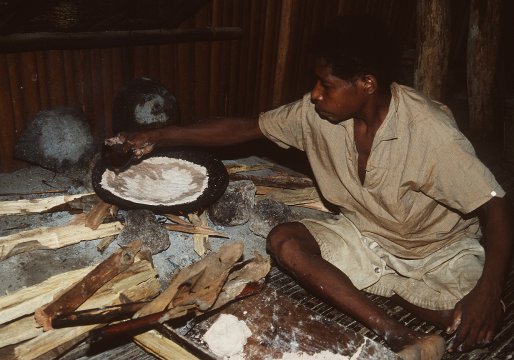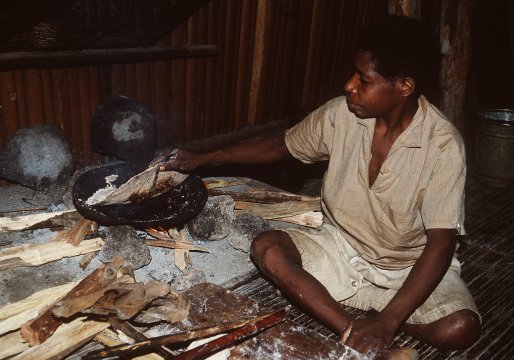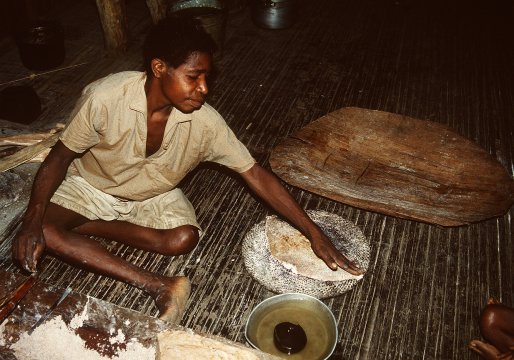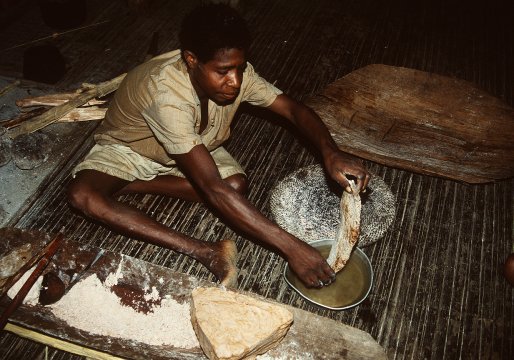|
John Tyman's Cultures in Context Series Torembi and the Sepik A Study of Village Life in New Guinea |
|
Topic No. 25: 24 Hours in the Life of a New Guinea Woman ~ Photos 517 - 600 |
|
|
|
John Tyman's Cultures in Context Series Torembi and the Sepik A Study of Village Life in New Guinea |
|
Topic No. 25: 24 Hours in the Life of a New Guinea Woman ~ Photos 517 - 600 |
|
|
 |
| 539. Small pieces of sago are first sliced from a large block, taken from the storage pile in the corner of the hut. |
 |
| 540. These are then crumbled up and kneaded into a lump … in much the same way as bread is prepared for baking. |
 |
| 541. This lump is then flattened in the hot frying pan; and, gradually, it is shaped into a pancake. |
 |
| 542. This is then sprinkled with water, using half a coconut shell. |
 |
| 543. And a couple of minutes later, it is turned over. |
 |
| 544. When it’s been cooked on both side the pancake is transferred to a platter and another lump of sago is spread around the hot pan. |
 |
| 545. The finished pancake is now folded over -- for easier and better storage -- and placed on the wooden dish in the rear. |
 |
| 546. The cakes which Antonia makes for her husband are dipped in water, to soften them. His teeth have rotted away from chewing betel nut and he can’t eat properly. |
 |
| 551. Damien had his 3 soggy pancakes plus some pitpit – a type of wild sugar cane. And the food for the older boys was hung up safe from rats and flies till required. |
.

![]()
Text, photos and recordings
by John Tyman
Intended for Educational Use
Only.
Copyright Pitt Rivers Museum,
Oxford University, 2010.
Contact Dr.
John Tyman for more information regarding licensing.
![]()
Photo processing, Web page layout,
formatting, and complementary research by
William Hillman ~ Brandon, Manitoba
~ Canada
www.hillmanweb.com